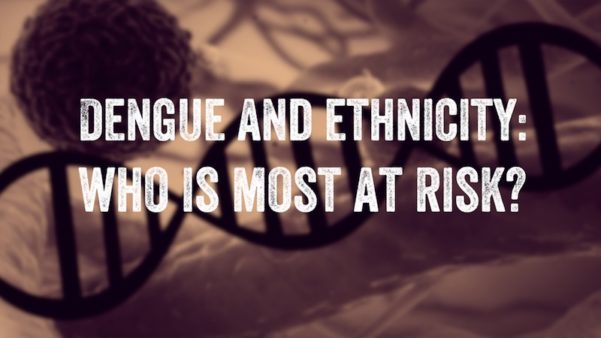- by Alison
Dengue and ethnicity: who is most at risk?

Dengue is now endemic in more than 100 countries across Africa, the Americas, the Eastern Mediterranean, South-East Asia, and the Western Pacific. Countries in the Americas, South-East Asia, and Western Pacific are most seriously affected, as the Dengue Health Map shows. Cases across these regions grew from 1.2 million in 2008 to more than 3.2 million in 2015, according to the World Health Organization. Could there be a link between dengue and ethnicity? Do people of African – or even European – descent have better natural protection against the virus?
The idea that skin color might influence dengue risk is nothing new. It’s more than a century since dark-skinned Cubans were first reported to be significantly less prone to catching the virus than their light-skinned counterparts. Decades later, during the Cuban dengue epidemics of 1981 and 2001, dengue and ethnicity were again seen as being linked.
“Cubans with darker skin most probably have African heritage and Cubans with lighter skin most probably have a European background,” says Dr. Luisa Pereira, Population Geneticist at IPATIMUP (Instituto de Patologia e Imunologia Molecular da Universidade do Porto). “Studies looking at genetic markers have confirmed that Cubans with African ancestry are less susceptible to severe dengue.”
Natural protection from severe dengue
Dr. Pereira is part of a team of scientists investigating whether our genes increase our risk of catching dengue and, if we do, make us more likely to develop the severe form of the disease. “Genetics is important in infections,” said Dr. Pereira. “Human genetics are important, along with virus genetics and mosquito genetics. Human genetics can affect how susceptible a population is to a virus; they can predispose some populations to dengue.”
With that in mind, Dr. Pereira collaborated with Cuban colleagues to study a population with two clear ancestral lines: African and European. Their research aimed to identify the genes involved. They found two: OSBPL10 and RXRA.
What’s more, they found that OSBPL10 and RXRA impact how lipids behave in our bodies. More importantly, these genes affect lipids differently in different dengue patients depending on whether they are of African or European heritage.
Knowing that lipids play an important part in infections in humans, they delved deeper. Dr. Pereira explains: “The dengue virus needs lipids to enter and multiply in the cell. Cubans of African ancestry have a natural adaption of the OSBPL10 and RXRA genes that limit the virus’ ability to enter and replicate inside cells, protecting them from developing severe dengue.”
Who’s most at risk from dengue?
The team next took their research to Thailand where Chinese, Indian and Southeast Asian ancestries are all represented within the population. “In Thailand, we found there were different genes associated with different forms of dengue,” said Dr. Pereira.
They found four genes (CHST10, AHRR, PPP2R5E, and GRIP1) associated with dengue fever. These genes affect how cells in our body signal others to seek out and destroy foreign bodies such as viruses (the ‘xenobiotic metabolism signaling pathway’ in technical terms). “These four genes probably also help the dengue virus to enter the cells,” says Dr. Pereira.
They found another two genes (the newly discovered PLCB4 and the previously known PLCE1) associated with the inflammation in blood vessels experienced with severe dengue. “These two genes cause the blood vessels to become more permeable, causing the hemorrhages you get with dengue shock syndrome,” says Dr. Pereira.
Dengue and ethnicity: genes influence susceptibility
Looking into the link between these genes and the risk of catching dengue and developing severe dengue, the research team determined:
- People of Southeast and Northeast Asian ancestry are highly susceptible to both dengue and severe dengue.
- People of African ancestry are intermediately protected against dengue fever and best protected against severe dengue.
- People of European ancestry are the best protected against dengue fever but the most susceptible to severe dengue.
Prioritising dengue campaigns
With no dengue treatment available and dengue in Europe likely in the near future, organizations need to know where they need to vaccinate populations or educate populations about dengue prevention and control. “By understanding which populations are most at risk from dengue, organizations such as the World Health Organization can decide where campaigns are needed the most,” says Dr. Pereira.
The team is currently working in the lab, running tests to prove that the genes they have identified are the human genes involved in dengue. They are also running tests to understand the mechanisms involved. Understanding how our bodies naturally protect us from dengue and severe dengue is an important first stage in identifying new treatments for dengue, and new drugs to treat this disease.
—

